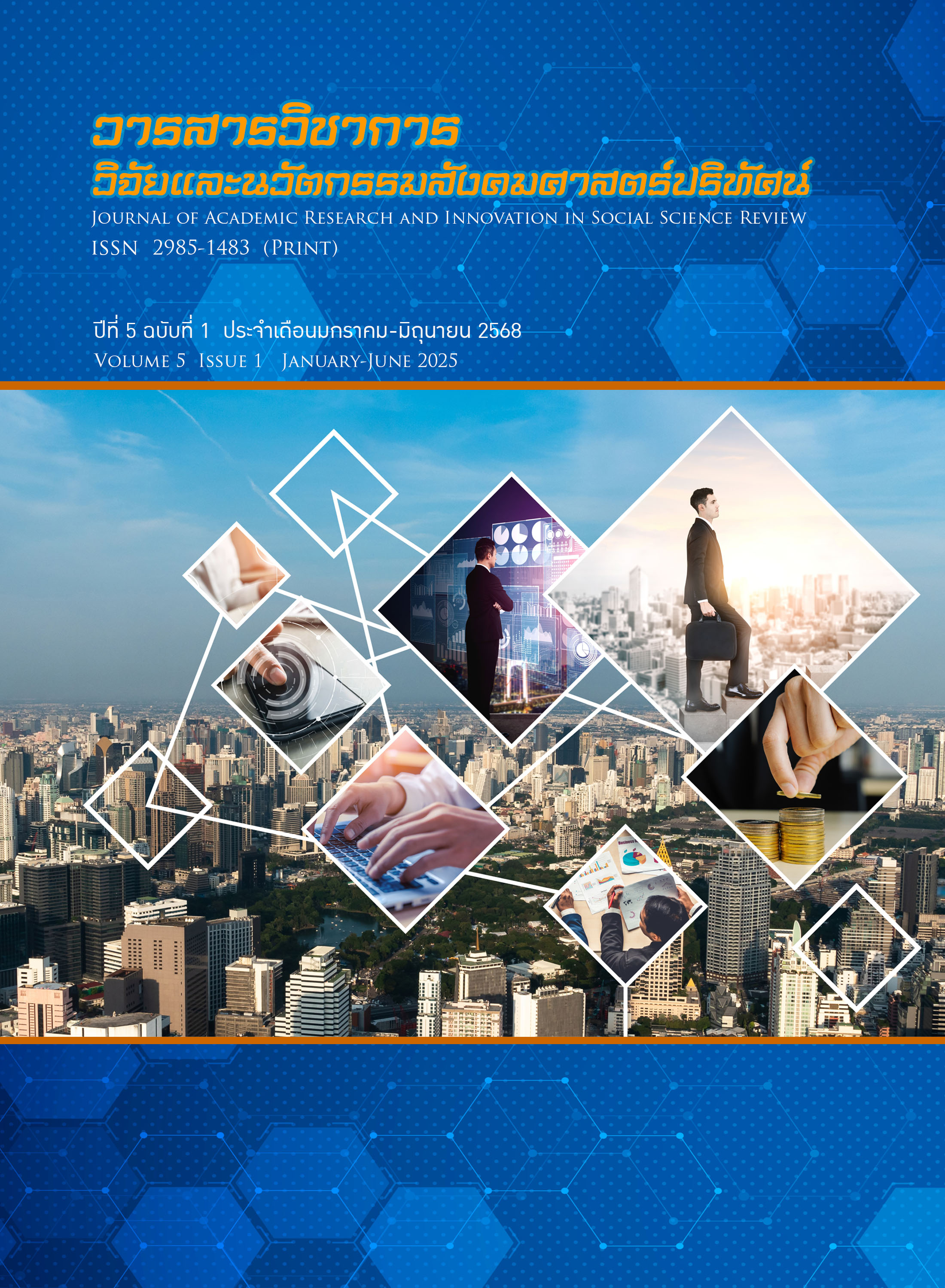สหสัมพันธ์ของความเชื่อใจได้ ความพึงพอใจ ความผูกพัน และความจงรักภักดีต่อหลักสูตร
คำสำคัญ:
ความเชื่อใจได้ , ความพอใจ , ความผูกพัน , ความจงรักภักดีบทคัดย่อ
การวิจัยนี้มีวัตถุประสงค์เพื่อ 1) ศึกษาสหสัมพันธ์ของความเชื่อใจได้ ความพึงพอใจ ความผูกพัน และความจงรักภักดีต่อหลักสูตร 2) สร้างสมการถดถอยเพื่อการพยากรณ์ จากตัวแปรความเชื่อใจได้ ความพึงพอใจ ความผูกพัน และความจงรักภักดีต่อหลักสูตร ประชากร คือ นักศึกษาของมหาวิทยาลัยราชภัฏวไลยอลงกรณ์ ในพระบรมราชูปถัมภ์ จำนวน 7,339 คน ในปี 2566 กลุ่มตัวอย่าง คือ นักศึกษา จำนวน 232 คน ได้มาจากการสุ่มแบบหลายขั้นตอน เครื่องมือที่ใช้ในการวิจัย คือ แบบสอบถามแบบมาตรประมาณค่า วิเคราะห์คุณภาพของเครื่องมือด้านความเที่ยงโดยใช้สัมประสิทธิ์แอลฟาของครอนบาค วิเคราะห์ค่าสหสัมพันธ์ และสร้างสมการถดถอยเพื่อพยากรณ์ ผลการวิจัยพบว่า สหสัมพันธ์ระหว่างความเชื่อใจได้กับความพึงพอใจ เท่ากับ 0.807 สหสัมพันธ์ระหว่างความเชื่อใจได้กับความผูกพัน เท่ากับ 0.678 สหสัมพันธ์ระหว่างความเชื่อใจได้กับ
ความจงรักภักดี เท่ากับ 0.725 สหสัมพันธ์ระหว่างความพึงพอใจกับความผูกพัน เท่ากับ 0.705 สหสัมพันธ์ระหว่างความพึงพอใจกับความจงรักภักดี เท่ากับ 0.781 สหสัมพันธ์ระหว่างความผูกพันกับความจงรักภักดี เท่ากับ 0.745
เอกสารอ้างอิง
Anderson, E. W., Fornell, C., & Lehmann, D. R. (1994). Customer satisfaction, market share, and profitability: Findings from Sweden. Journal of Marketing, 58, 53-66.
Cuesta-Valiño, P., Gutiérrez-Rodríguez, P., & Loranca-Valle, C. (2021). Sustainable management of sports federations: The indirect effects of perceived service on Member’s loyalty. Sustainability, 13(2), 458. doi: https://doi.org/10.3390/su13020458
Dhaigude, A. S., Archit, V. T., Mohammad, S. J., & Kamath, G. B. (2023). Is perceived value enough to create loyalty for m-wallets? exploring the role of trust and satisfaction. Cogent Business & Management, 10(3). doi: https://doi.org/10.1080/23311975.2023.2281050
George, A., & Sahadevan, J. (2024). What determines behavioural intention in health services? A four-stage loyalty model. Rajagiri Management Journal, 18(2), 180-197. doi: https://doi.org/10.1108/RAMJ-10-2023-0291
Hennig-Thurau, T., & Klee, A. (1997), “The impact of customer satisfaction and relationship quality on customer retention: A critical reassessment and model development”. Psychology and Marketing, 14(8), 737-765.
Hennig-Thurau, T., Gwinner, K., & Gremler, D. (2002), “Understanding Relationship Marketing Outcomes, An Intration of Relationsl Benefits and Relationship Quality”. Journal of Service Research: JSR, 4(3), 230-246.
Huang, Y., & Kim, D. (2023). How does service quality improve consumer loyalty in sports fitness centers? the moderating role of sport involvement. Sustainability, 15(17), 12840. doi: https://doi.org/10.3390/su151712840
Kigen, F., & Marike Venter, d. V. (2024). Decoding the symphony of satisfaction, commitment and trust as predictors of customer loyalty in demarketing situations. International Review of Management and Marketing, 14(5), 235-249. doi: https://doi.org/10.32479/irmm.16780
Marko, V. D., & Redda, E. H. (2023). Customer loyalty and trust in south african retail banking. Innovative Marketing, 19(2), 211-222. doi: https://doi.org/10.21511/
im.19(2).2023.17
Morgan, R. M., & Hunt, S. D. (1994), “The Commitment-Trust Theory of Relationship Marketing”. Journal of Marketing, 58, 20-38.
Pedraza-Rodríguez, J. A., García-Briones, M. Y., & Mora-Márquez, C. (2024). Exploring the importance of the perceived value of port users: Evidence from the public port system in ecuador. Journal of Economics, Finance & Administrative Science, 29(57), 146-165. doi: https://doi.org/10.1108/JEFAS-09-2022-0214
Rust, R. T., & Zahorik, A. J. (1993), “Customer satisfaction, customer retention, and market share”. Journal of Retailing, 69(2), 193-215.
Sukirno, S., Nabella Putri, H. P., & Amanollanejad, A. (2021). Bank customer loyalty at post-implementation of automatic exchange of information (AEOI) in indonesia. Ihtifaz, 4(2), 159-174. doi: https://doi.org/10.12928/ijiefb.v4i2.5768
Todea, S., Davidescu, A. A., Pop, N. A., & Stamule, T. (2022). Determinants of student loyalty in higher education: A structural equation approach for the bucharest university of economic studies, romania. International Journal of Environmental Research and Public Health, 19(9), 5527. doi: https://doi.org/10.3390/ijerph19095527



